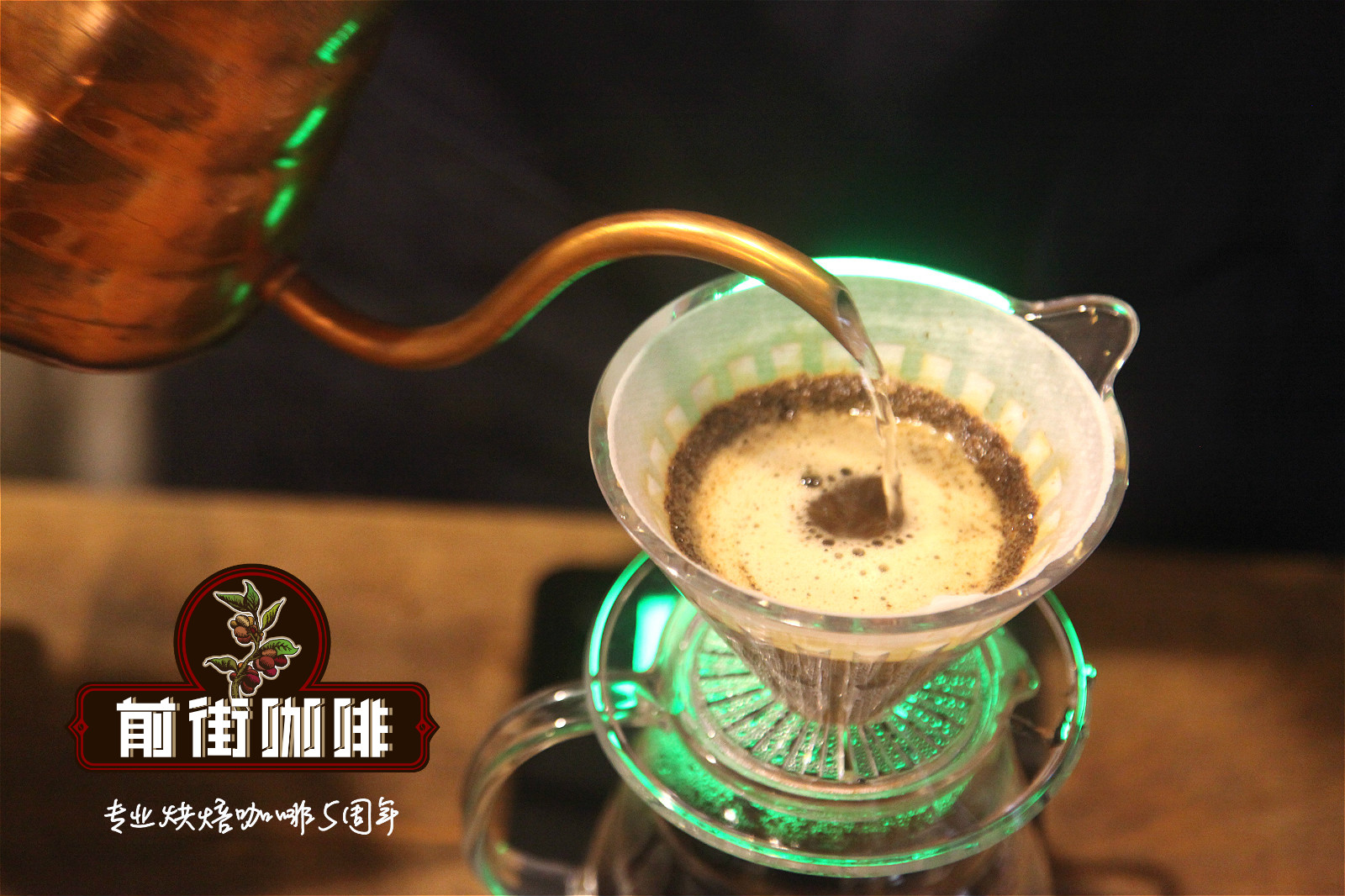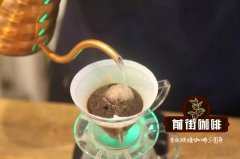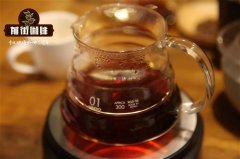What is the Brazilian Palma Cup? What kind of Brazilian Santos coffee do you have? The characteristics of Santos, Brazil?

Professional coffee knowledge exchange More coffee bean information Please pay attention to coffee workshop (Weixin Official Accounts cafe_style)
Brazilian coffee is called "Brazils" to distinguish it from "Milds" coffee. The vast majority of Brazilian coffee is unwashed and dried, and they are classified according to the state of origin and port of shipment. Brazil has 21 states, 17 of which produce coffee, but four of them produce the most, accounting for 98% of the country's total production. They are: Paraná, Sao Paulo, Milas Gerais and Espírito Santo. Paraná in the south has the most impressive output, accounting for 50% of the total.
Although coffee is diverse, Brazilian coffee is suitable for the taste of the masses. For example: coffee produced in northern coastal areas has a typical iodine taste, reminiscent of the sea after drinking. This coffee is exported to North America, the Middle East and Eastern Europe. Another coffee that is interesting and worth pursuing is rinsed Bahia coffee. This coffee is not easy to find because Brazil is the world's largest coffee consumer after the United States, and many of the best coffees can only be found in its domestic market. In Brazil, the second largest producer is Robusta coffee. This coffee is sold in supermarkets.
Robusta coffee, sold under the name Conilon, accounts for 15 percent of total production. Old Bourbon coffee is grown on some estates in the Cerrado district of the state of Milas Gerais in southeastern Brazil. These estates, such as Capin Blanco Estate and Vista. Alegre Manor, which grows Bourbon old-variety coffee, is also on sale in the city. Although they come from the same region, these coffees have their own characteristics. Capim Blanco is softer than Vista Allegre, which is strong and dark, and relatively low in acidity, but like all Brazilian coffees, they are best drunk fresh because the older they are, the stronger the acidity. These coffee growers have organized themselves into the Brazilian Specialty Coffee Association.
Coffee overall impression There are many kinds of flavors, many flavors, but most of them are low coffee, smooth taste recommended low to deep roasting, suitable for a variety of uses Grade good. Brazil is the world's largest coffee producer. Yield comes first and quality is stable. Arabica species. Drying method is adopted. Aroma and taste moderate. There is almost no sour taste. For neutral coffee representative. It can be said that it is the most suitable variety for mixed coffee.
Saint-Toth, esp. Bourbon bourbon (named after the French colonial island Bourbon bourbon bon) Bourbon, now known as Réunion, where the coffee saplings that brought Para were planted, is known for its special aroma, flawless, neutral taste, and can be cooked directly by itself. It is also a good partner for Italian beans. The real Bourbon Santos are the beans from the first few seasons of the mocha coffee tree. After three or four years, the beans change character, and by the sixth year, they become Flat Bean Santos. Red saint toasts taste sweet, bourbon saint toasts taste bitter, fresh saint toasts taste sour, aging will reduce the sourness Recently, the "Tolma Cup" has also been highly rated.
Brazil is a major coffee producer, of course, to know more about him! Brazil produces more than 30 million bags (60 kg each) of coffee beans a year, and coffee experts do not rate their beans highly, considering them too monotonous, bitter, sour and aromatic enough, and even not included in the list of fine coffee producing areas. Because most Brazilian coffee gardens are below 1200 meters above sea level, there is no big tree shade, and the way of picking beans is rough, raw and ripe fruits are collected together, which does not meet the conditions of fine coffee. Planting trees by insolation makes coffee fruit grow faster, makes flavor development incomplete, and the hardness of beans is insufficient, the fruit acid taste is obviously low, and there is a wood taste, which cannot be elegant. Brazil beans soft texture, baking process is obviously not resistant to heat, out of the oven time should be early, otherwise easy to scorch.
In 1998, Vietnam beans were dumped at low prices. Under pressure, the Brazilian government decided to upgrade the quality and enter the high-end market in Europe and America to increase farmers 'income by raising prices. In addition, Brazil could not grow good coffee. The Brazilian Coffee Association, founded in 1991, believed that there were many excellent farms in Brazil and that the quality of coffee was comparable to that of extremely hard beans at high altitudes. Therefore, with the assistance of the American Coffee Association, the first Brazilian Coffee Cup of Excellence was held in 1999. The winners could openly bid by international buyers through the Internet. The effect was ideal, encouraging coffee farmers to improve the quality of coffee beans.
END
Important Notice :
前街咖啡 FrontStreet Coffee has moved to new addredd:
FrontStreet Coffee Address: 315,Donghua East Road,GuangZhou
Tel:020 38364473
- Prev

What is coffee in Parana, Brazil? Introduction to Cooxup é, the largest coffee cooperative in Brazil
Professional coffee knowledge exchange more coffee bean information please follow the coffee workshop (Wechat official account cafe_style) Brazil's largest coffee cooperative Cooxup coffee harvest (the regional cooperation of coffee growers in Guashupei) is coming to an end. According to data released on Tuesday, (30) work on the coverage of the cooperation is 91.38% until August 26. Is expressed to another
- Next

How does the Costa Rican-Tarazu coffee treated with black honey feel?
Costa Rica is located in the Central American isthmus, 10 north latitude, 84 west longitude. It faces the Caribbean Sea to the east and the North Pacific Ocean to the west. Costa Rica is located in the volcanic belt of the low latitudes of Central America, the central plateau and mountains are about 800 to 2000 meters above sea level, suitable for coffee growth. Costa Rican coffee has always been famous for its well-balanced, clean, clear and berry-flavored fruit acid. Excellent Costa Rica
Related
- Detailed explanation of Jadeite planting Land in Panamanian Jadeite Manor introduction to the grading system of Jadeite competitive bidding, Red bid, Green bid and Rose Summer
- Story of Coffee planting in Brenka region of Costa Rica Stonehenge Manor anaerobic heavy honey treatment of flavor mouth
- What's on the barrel of Blue Mountain Coffee beans?
- Can American coffee also pull flowers? How to use hot American style to pull out a good-looking pattern?
- Can you make a cold extract with coffee beans? What is the right proportion for cold-extracted coffee formula?
- Indonesian PWN Gold Mandrine Coffee Origin Features Flavor How to Chong? Mandolin coffee is American.
- A brief introduction to the flavor characteristics of Brazilian yellow bourbon coffee beans
- What is the effect of different water quality on the flavor of cold-extracted coffee? What kind of water is best for brewing coffee?
- Why do you think of Rose Summer whenever you mention Panamanian coffee?
- Introduction to the characteristics of authentic blue mountain coffee bean producing areas? What is the CIB Coffee Authority in Jamaica?

